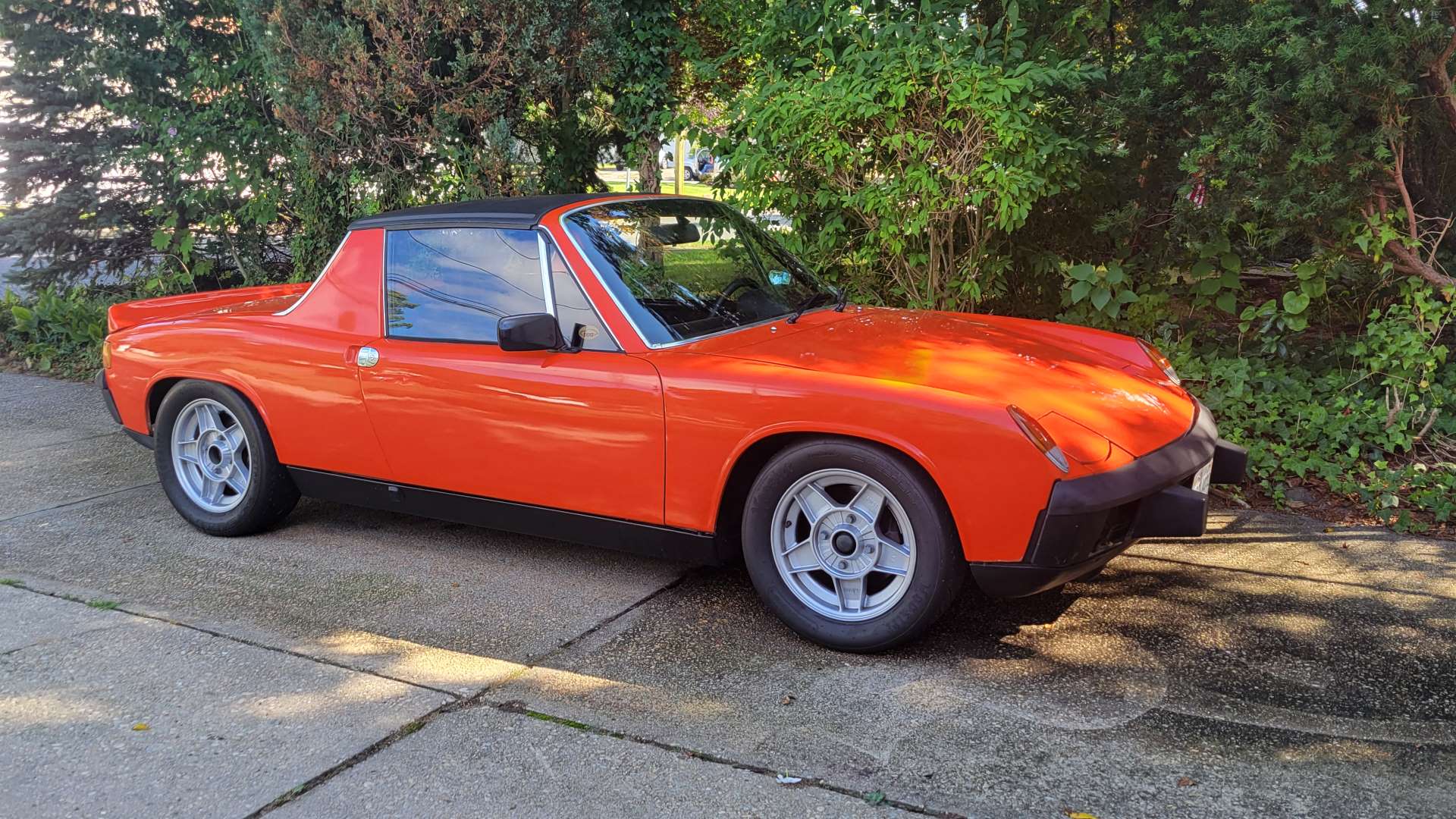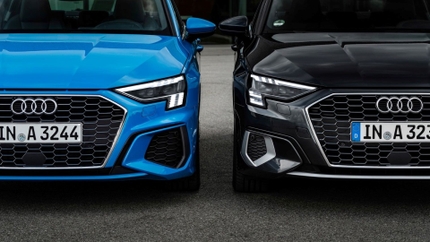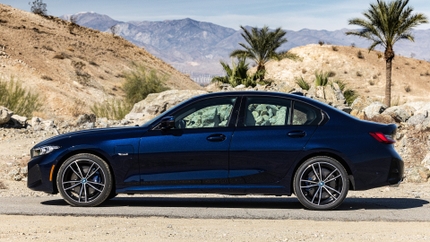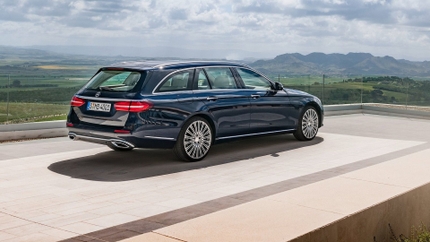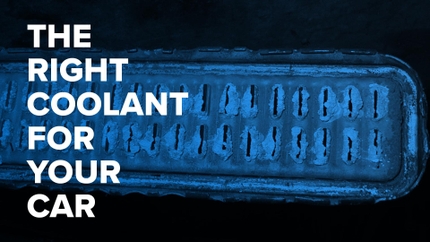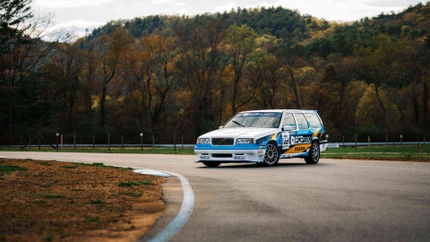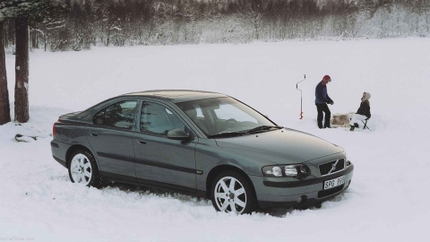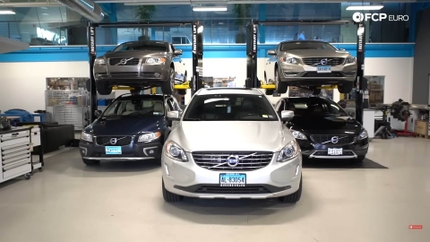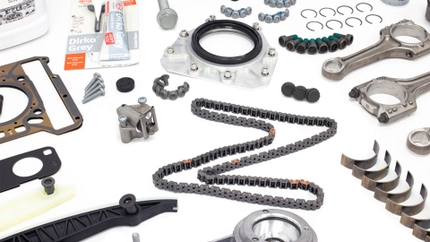For many years, the long-roofed sedan was the transport of choice for the American family. Better known as a wagon, the decade and a half following the oil crisis forced the hatch-bearing body into a running joke thanks to soul-crushing designs of the malaise era. It was a paradigm shift that the wagon never truly recovered from. Coupled with the introduction of the SUV, its all but disappeared from our shores. Thankfully, Europeans are far less interested in the SUV and continue to produce wagons that we occasionally receive.
Nowadays, the wagon is a rare sight on American shores as the crossover takes its place. Yet, with the ever dwindling numbers, a few European automakers offer the often dreamed of but seldomly bought wagon variants for us lowly Americans to purchase. Each of them is aimed at a different part of the market, giving most buyers a solid offering. Whether you’re looking for a supercar-fast daily driver or a lifted and comfortable cruiser, here are all the European wagon variants still available in the US market.
Porsche Panamera Sport Turismo
Porsche’s Panamera, now just over a decade old, has always been an incredible driving experience wrapped in a polarizing design. Precise steering and that unmistakable Porsche feel weren’t enough for many to get past the sloping roofline that couldn’t decide what it wanted to be. But a few years after arrival, Porsche unveiled their Sport Turismo concept, a long-roof Panamera with futuristic LED headlights, razor-thin taillights, and aggressive but beautiful lines that finally cemented the four-door as a proper wagon. We didn’t know it then, but we were looking at the Panamera you can buy from Porsche today—and one of the last Wagons ever to see sales in the United States.
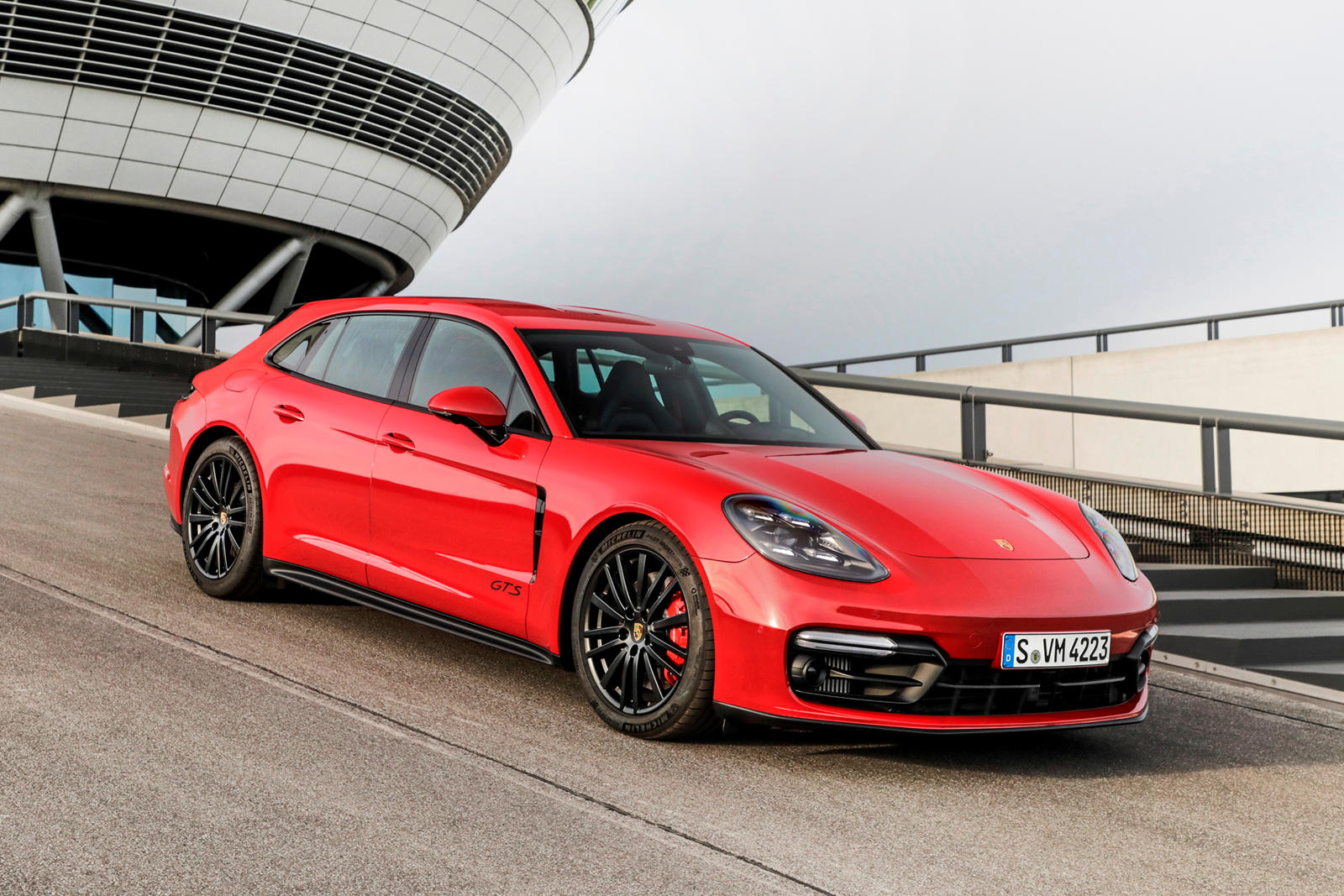
The Panamera lineup has three different body styles for eight different trim levels, but those offerings shrink when the Sport Turismo body style is selected. Within those offerings are two engine choices and a singular transmission, but their power outputs separate one from another. The smaller of the two engines is a 2.9-liter, twin-turbocharged V6 making either 325 or 443 horsepower in the Panamera 4 and 4S, respectively. Stepping up to the more expensive trim levels comes with a 4.0-liter twin-turbocharged V8 that produces 473 horsepower in the GTS variant or 620 horsepower in the Turbo S. Each of those variants, save for the GTS, are also available as plug-in hybrids that use an electric motor for short EV capabilities and increased performance. Behind each engine in every trim is an eight-speed PDK dual-clutch transmission.
At the very least, the lowliest Panamera 4 Sport Turismo gets you a 5.0s 0-60 time and a top speed above 160mph, though Porsche consistently underrates their performance figures, so take those with a grain of salt. At the other end of the range is a 2.9s 0-60 time and a 196mph top speed for the Turbo S, making it the fastest production wagon you can buy today.

Porsche’s adaptive air-suspension and PASM active suspension management system underpins each Sport Turismo. None of the Panameras are lightweight vehicles, and the large standard rim sizes keep the tire’s sidewall small, so the air suspension plays a huge part in the comfort and control the chassis offers. Journalists have found that the Panamera range continues to offer stellar suspension tuning, although the steering feel isn’t on par with other models. Optionally, all Sport Turismos can receive PDCC, Porsche’s active anti-roll bars, and PTV+, their torque vectoring system, for increased handling and comfort.
Of course, it’s Porsche, so there are options for everything regarding trim and specification, not just the performance benefits. Do you want brown leather seats with blue deviated stitching and purple inserts? Maybe brushed aluminum door sills with walnut wood trim, a Race-Tex (Porsche’s Alcantara substitute) steering wheel, and leather-covered air vent slats? Sure, why not. There are so many different ways to spec the interior you’d be hard-pressed to find two identical specs out in the wild. However, regardless of trim, each Sport Turismo comes with an array of standard luxury features.

Two digital gauges flank a large, analog tachometer on either side to present the speedometer and several other functions for the driver. The rising center console, a defining styling element in the original Panamera, has been updated with a touchscreen offering haptic feedback for climate controls, radio controls, and suspension settings. A massive 12.3” touchscreen handles infotainment, which features Apple CarPlay and Android Auto. The primary audio system contains a 10-speaker 150-Watt system, but buyers can upgrade to a Bose or Burmester 3D system for some extra coin. The latter uses 21 individually-controlled speakers with a 1,455-Watt maximum output.
Even the paint options are vast, with two standard colors, ten optional metallics, five “special” colors, and 60(!) Paint-To-Sample colors to pick through. Then buyers can opt for 24 different wheel options, though the variance comes from six styles and four coloring options. The sheer amount of individualization is far beyond that of rivals and puts Porsche closer to a low-volume automaker.
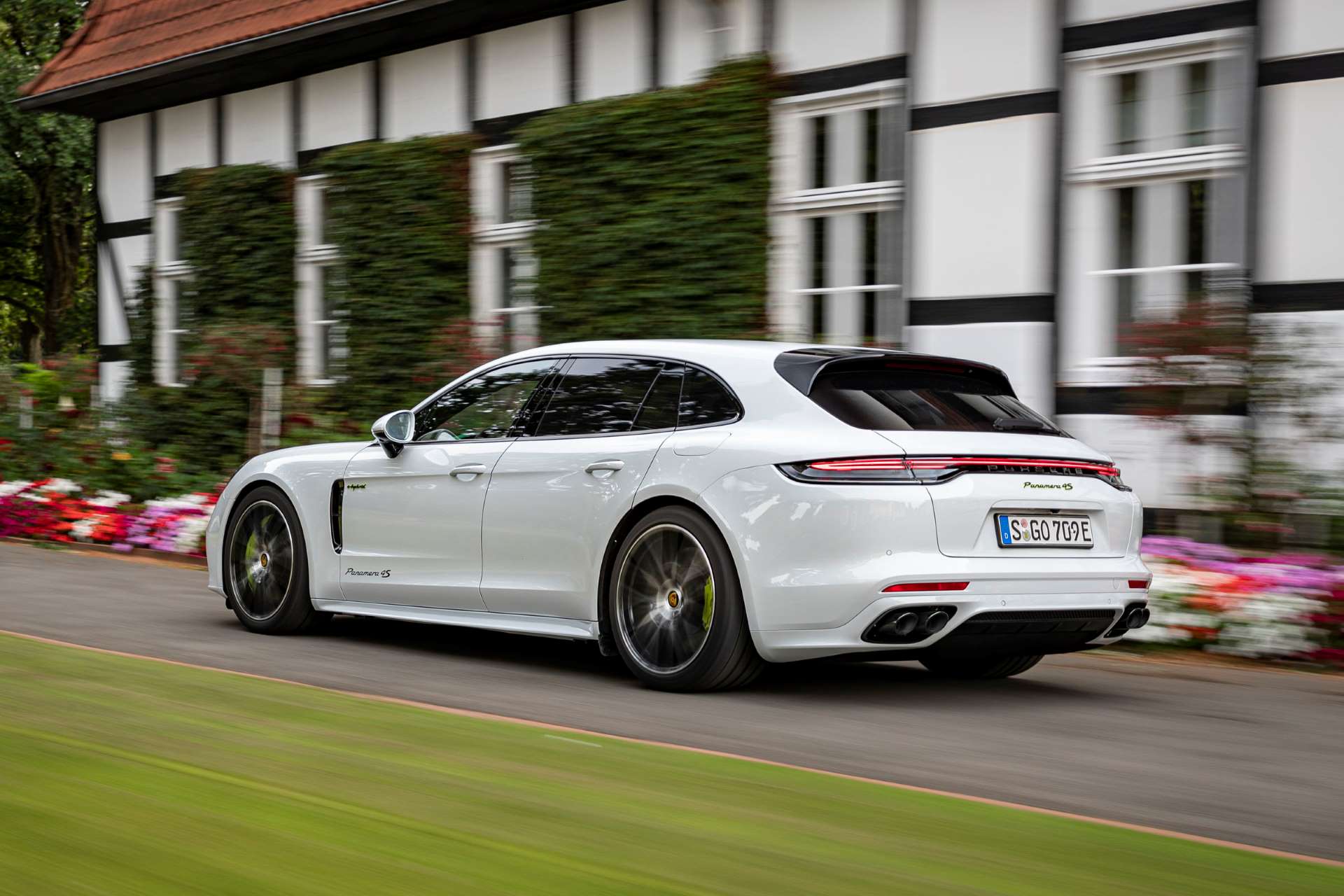
If there are any significant cons to the Sport Turismo, it’s likely the price. The most basic model starts at over $100,000, and the price doubles once you reach the top-spec Turbo S E-Hybrid. Adding on options only further drives up the price, and on models so easily enhanced by add-ons, you’re not likely to find one without a significant amount of them. That’s not great, as most enthusiasts who’d love to own a modern wagon are priced well out of them. Luckily, Sport Turismo sales have made up for more than 10% of the Panamera’s sales figures, so the variant doesn’t seem to be leaving the lineup soon.
Porsche Taycan Sport/Cross Turismo
Following the massive Dieselgate scandal, the German government forced VAG to press forward with its EV programs and have a car ready for sale within three years. Porsche led the charge with the J1 platform, and their Taycan resulted from the accelerated engineering. The electric four-door has been an enormous hit for Porsche, and as one of the first luxury EVs put to market, it has taken a large chunk out of Tesla’s market share. Within the last few years, Porsche introduced the Cross Turismo, a lifted, long-roof variant of the EV that features unique body-styling elements, and the Sport Turismo, the non-offroad wagon variant. They’ve only added to the lineup’s strength while bringing the classic body style into the modern EV era.
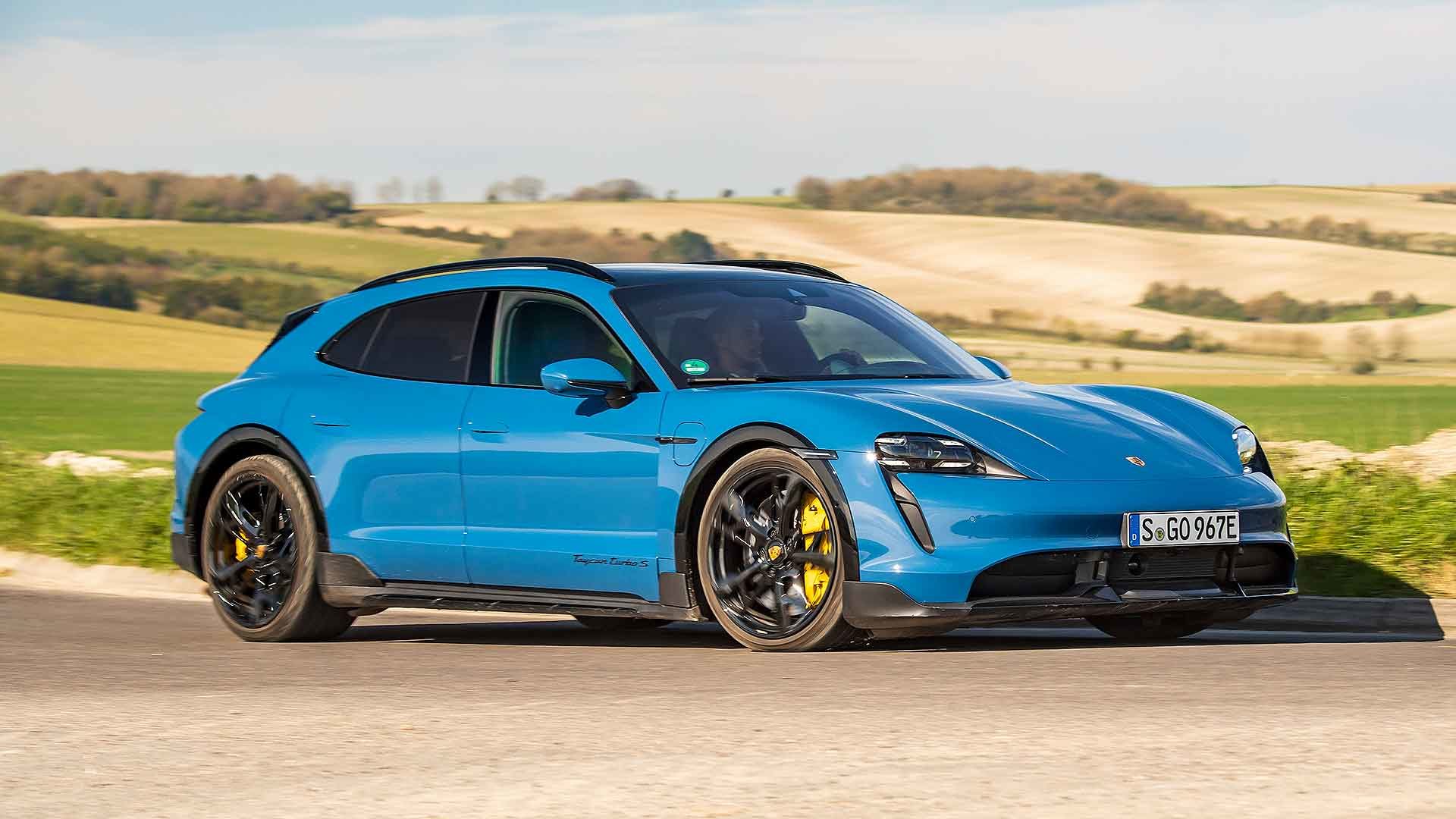
The Taycan as a wagon is a sight to behold, although the EV’s most important features come from its propulsion. Each wagon variant features the “Performance Plus” battery, measuring at 93.4kWh; it gives the two electric motors a minimum of 469 horsepower in the lowest-spec Taycan 4 Cross Turismo trim. Stepping up to the Turbo S gets you up to 750 horsepower with overboost, but that only lasts for a few seconds; out of overboost, you’ll have to make do with 690. Only the Taycan GTS Sport Turismo sports the long roof without the lifted look, and its power sits comfortably in the middle of the range at 590.
All of that sounds dandy in a vacuum, but what about the real-world anxieties of EV range? Those fears are warranted as the range of Porsche’s Taycan is far below that of their gasoline-equivalent Panamera. However, the ranges they do offer are more than enough to get you to and from a moderate distance trip with a bit of charging. The EPA ranks the models at an estimated 200-225 miles of range, but testing through several automotive news outlets and independent journalists has shown that the Taycan with the Performance Plus battery can drive well into the 250-300-mile range under normal highway conditions.
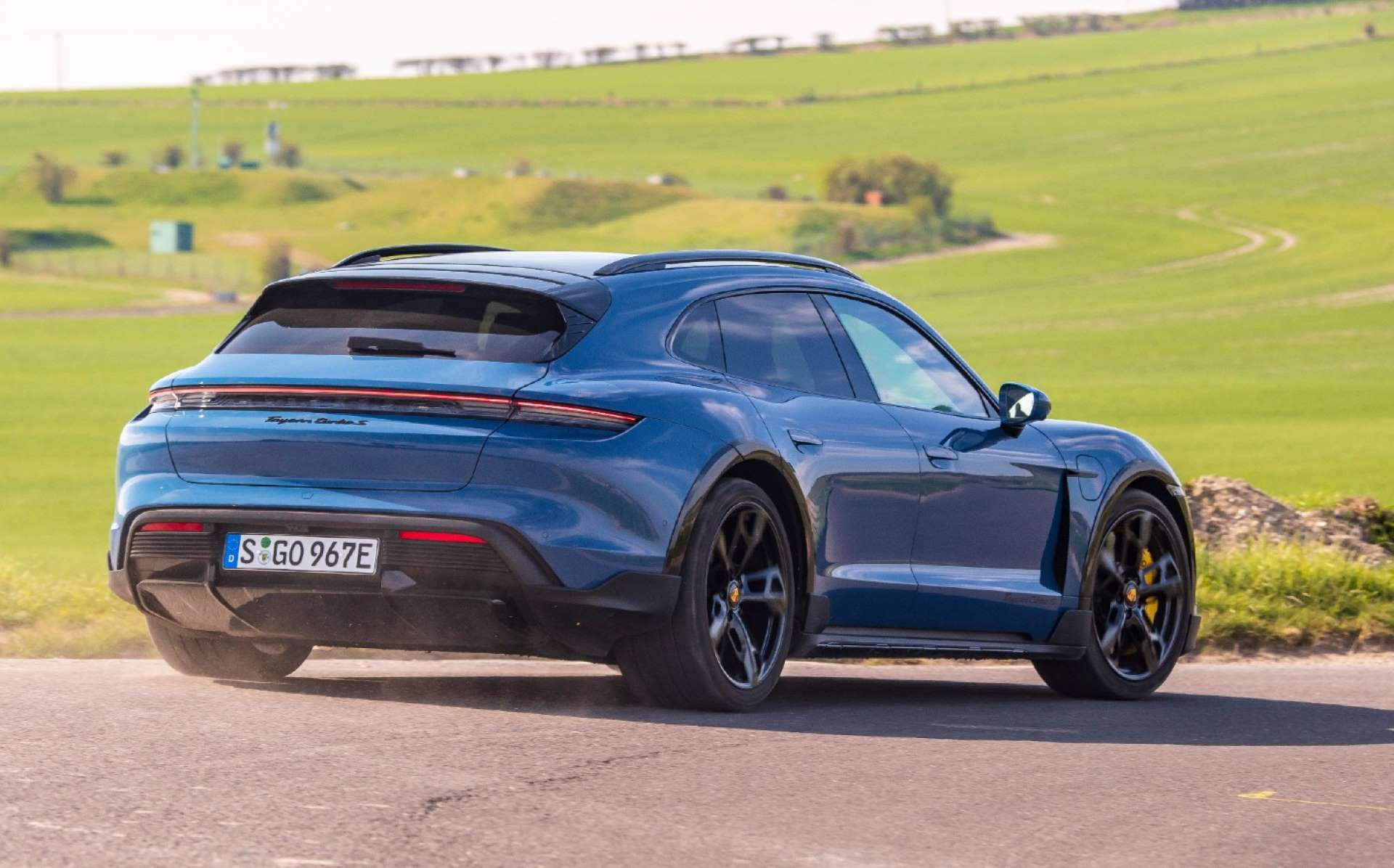
Take one off the highway and into the canyons for a spirited drive, and range decreases, but that isn’t exclusive to an EV. There, the Taycan should manage corners pretty well as the same adaptive air suspension with PASM that controls the Panamera’s body motion is in the Taycan with bespoke damper characteristics. As the Cross Turismo, the base suspension height is 20mm higher than that of a standard Taycan, and the air suspension allows it to raise another 10mm at the press of a button. At that height, you’ll be ready to conquer the muddy, pot-hole, and gravel-filled backroads of every farm and mountain you come across. Optionally you can even fit the Taycan with an Off-Road Design package that adds extra bodywork just fore and aft of each wheel to protect the paint from mud and debris.
Without the Off-Road Design package, the Taycan still wears a unique exterior compared to the other models. The lowest edge of every panel that meets the wheels or road is clad with black plastic trim, similar to an Audi Allroad or Subaru Outback. I wouldn’t say it puts the wagon on par with a Jeep in terms of off-road capabilities, but the Taycan Cross Turismo has shown in testing that it can get rough and dirty without a fuss. On the other hand, the GTS Sport Turismo is more like the Panamera, being a street-oriented wagon and nothing else. It lacks off-road modifications but makes up for it with sporty interior accents and a unique front bumper.
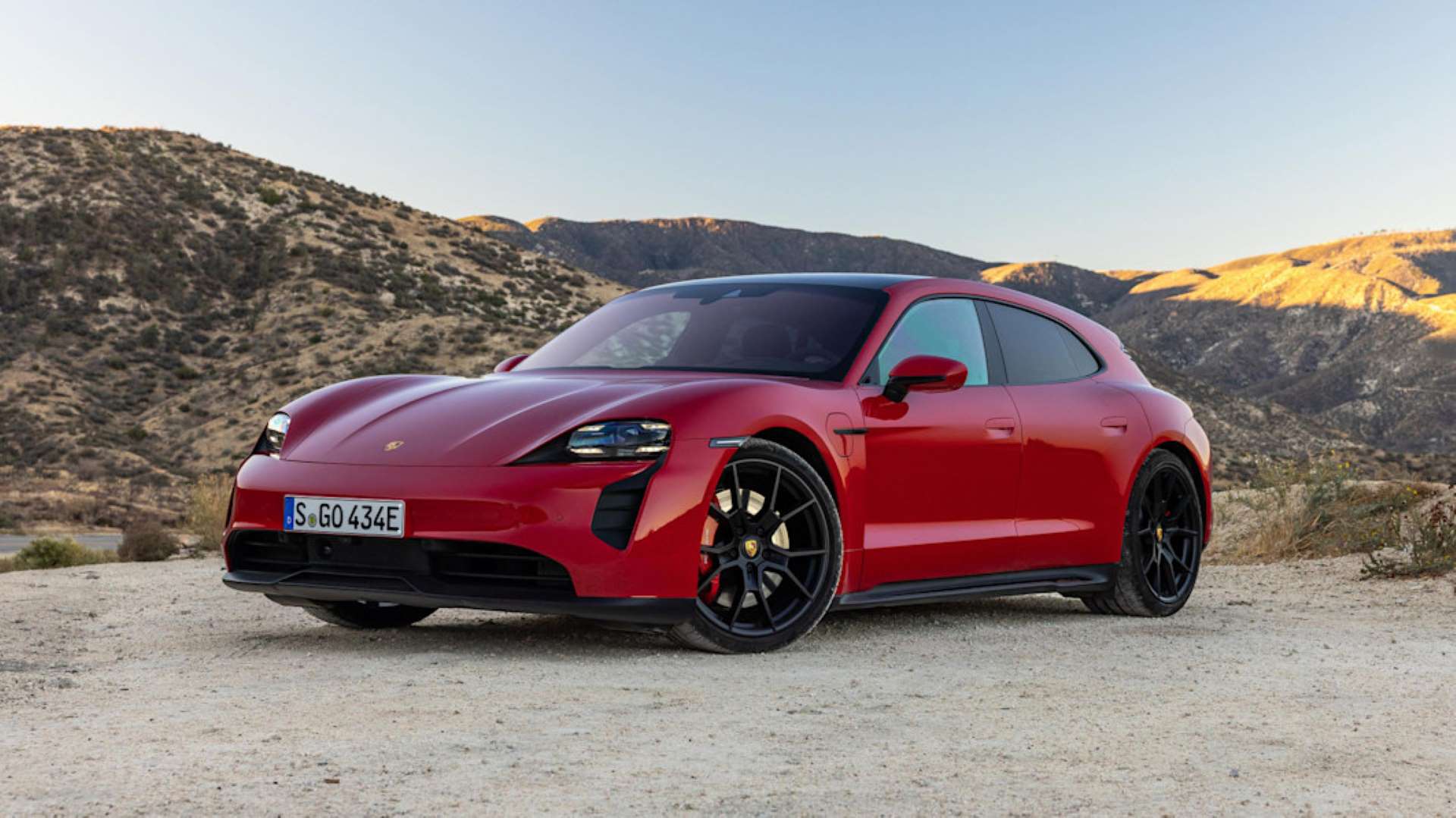
Like the Panamera, and unlike the Audi e-Tron GT, the Taycan features a vast array of customization and optional extras. The range has its own set of standard and extra-cost colors and also benefits from the extensive Paint-To-Sample list that Porsche offers on its other models. Noteworthy interior add-ons include:
- A dashboard screen for the front passenger.
- Massaging front seats.
- Heated rear seats.
- Rear seat screens.
- The same Burmester 3D audio that’s found in the Panamera.
If you’re in the market for a Porsche wagon and have no drivetrain preference, the Taycan makes sense. The least expensive Taycan Cross Turismo is around $6000 cheaper than the equivalent Panamera while offering slightly better performance. Sure, that comes with having to charge your wagon on long trips, but that inconvenience shouldn’t be enough to detract from what the Taycan Cross Turismo offers.
Audi A4 & A6 Allroad
Audi has consistently offered a wagon in the states for nearly forty years. The Avant is a staple among enthusiasts and is sought after in every configuration. The Avant offering is far slimmer these days, but it still exists for the dedicated few looking for the ultimate family ride. Of all those past wagons, the original allroad has garnered a reputation for being one of the least reliable cars you could ever buy, full stop. However, the lifted and all-wheel drive luxury wagon recipe was a hit among buyers two decades ago and remains that way today, so Audi took another crack at it.
Audi currently offers two kinds of allroad: the A4 and A6. The A4 is the smaller of the two, though that's relative as it's a few inches longer and wider than a current BMW 3-series. Under the hood is a 2.0-liter, turbocharged inline-four-cylinder making around 260 horsepower and 270 lb-ft of torque. It's enough to shove the 3800lb wagon to 60mph in about 5.5s and offer around 26mpg combined. According to Audi, get the allroad on the highway, and you can push that fuel mileage up to the 30mpg mark. That's likely thanks to the inclusion of a 12-volt mild hybrid system and the efficiency of the 7-speed S-Tronic dual-clutch automatic transmission.
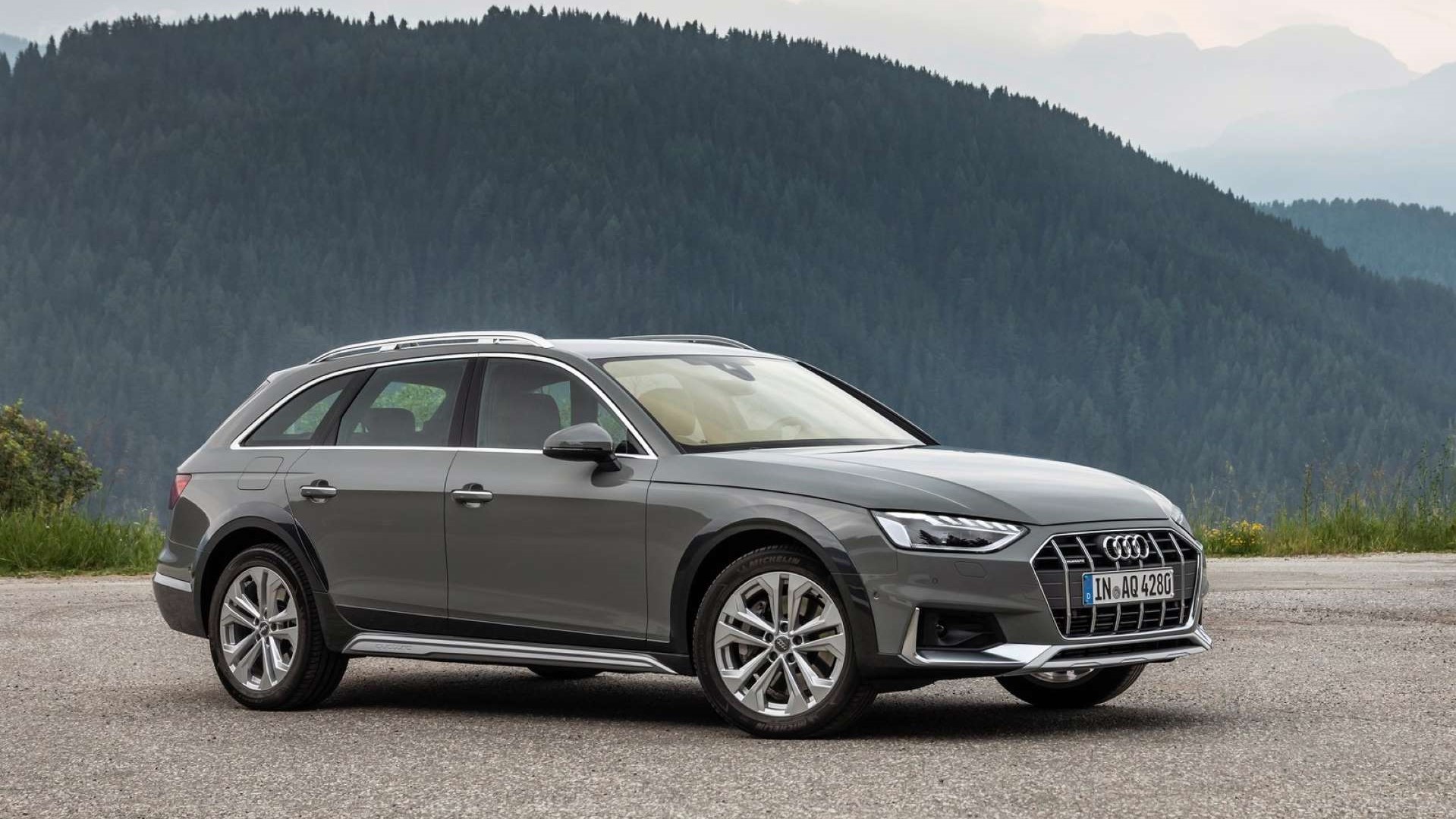
The A4 allroad starts at just over $45,000 and is available in three different trims: Premium, Premium Plus, and Prestige. Premium trim has a striking exterior featuring sharp lines, plastic cladding on the wheel arches, bumpers, skirts, LED headlights, adaptive dampers, 18" wheels, and brushed aluminum accents. The single-frame grille looks as large as ever, but Audi has surrounded it with chiseled cheeks and accents that continue down the chassis to the rear. Inside, a panoramic sunroof, leather seats, tons of wood trim, a 10.1" infotainment display, and a few collision warning features round out the equipment. Stepping up to the Premium Plus trim is a $5000 jump alone. However, it includes a Bang & Olufsen 3D sound system and a car-load of safety and convenience features like a heated steering wheel, adaptive cruise control, and lane-keep-assist. The Warm Weather Package and Navigation Package are optional on the mid-trim but standard on the Prestige.
The A6 allroad is a bigger car fitted with a larger engine that makes more power. At about seven inches longer and two inches wider, the A6 offers 30cf³ of cargo space with the seats up; 5.8cf³ more than the A4. To help carry that load, the A6 comes equipped with a 335 horsepower, turbocharged 3.0-liter V6. Overall, MPG figures are down two points compared to the smaller sibling, but the 369 lb-ft of torque on tap is enough for a 5.1s sprint to 60mph from the 4500lb wagon. A 7-speed S-Tronic transmission and quattro all-wheel-drive system handle shifting and traction functions.
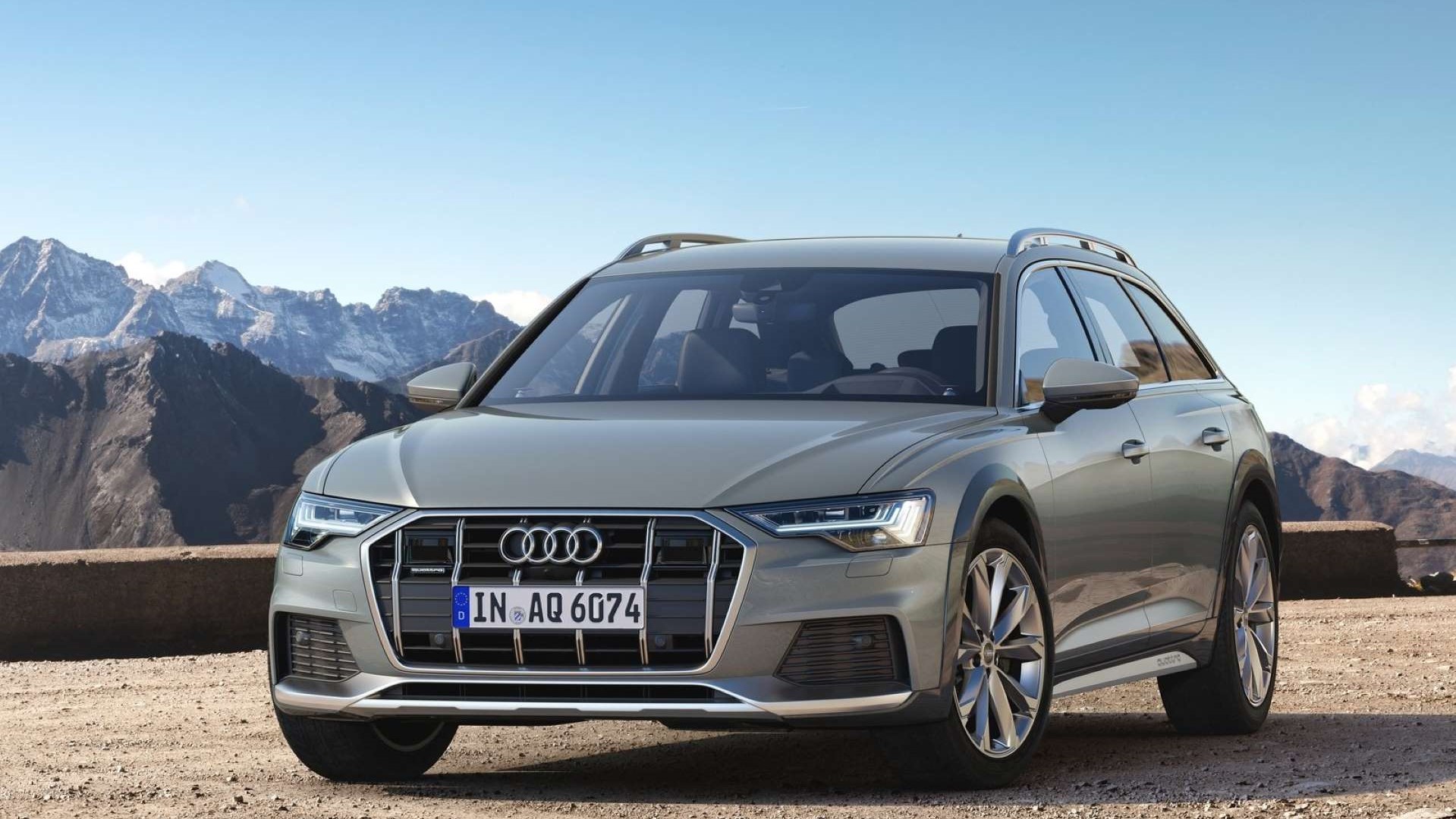
Supporting the big wagon is Audi's adaptive air suspension. An air strut at each corner is linked by a central computer and connected to a handful of accelerometers and sensors that adjust spring and damper settings as you roll along to five different predetermined suspension settings. The Audi drive select feature included as standard on the A6 offers five modes that alter the suspension, engine, transmission, and steering characteristics based on predetermined settings. Those modes—Auto, Individual, Comfort, Dynamic, and Offroad—offer different suspension heights thanks to the air springs. Standard ride height provides 5.5" of ground clearance in Auto and Comfort modes. Dynamic mode lowers the car by .6" while Offroad raises it by 1.2". Additionally, only the suspension has a sixth mode, called "Lift." Available while traveling below 22mph, it provides another .6" of lift over Offroad mode for the deepest, most aggressive terrain.
The high-tech features don't stop there, though, as the $67,000 wagon is loaded with goodies. Screens are everywhere in the interior as they're responsible for offering information and several controls. The instrument cluster uses Audi's Virtual Cockpit with a 12.3" fully programable interface, while a 10.1" touchscreen handles infotainment in the middle of the dash. Even the climate controls and other secondary systems use a touchscreen with haptic feedback located just below the infotainment screen. Once you're finished exploring all of those systems, you can flick on your heated leather seats and jam out to your 755-Watt Bang & Olufsen 3D sound system.

Moving up to the top-spec prestige trim adds another $5000 to the starting price and a handful of useful features you'll use daily. A large chunk of the price jump comes from the included Executive Package available on the lower trim. 4-zone climate control, ambient LED interior lighting, ventilated front seats, adaptive cruise control, and heated rear seats round out that package. Buyers can add the Luxury Package for improved Valcona leather, front seats with a massage feature, and extended leather on the dash, armrests, and the center console. Other options include the Night vision assist and a 1920-watt B&O sound system.
Both the A4 and A6 can be had with the Black Optics package and body-colored lower trim. With the Black Optics, they receive unique wheels, black roof rails, and black exterior trim, but the A4's package also includes black badging, exhaust tips, and mirrors, Gray Oak wood inlays, and Selenite Silver colored lower body trim. Body-colored lower trim is available, but only with specific exterior colors. Standard color offerings are typical Audi; several greys and silvers make up the offering's majority while a relatively vibrant Blue and Green support them. Interior upholstery colors are black and beige for the A6, while the A4 also receives brown and grey.
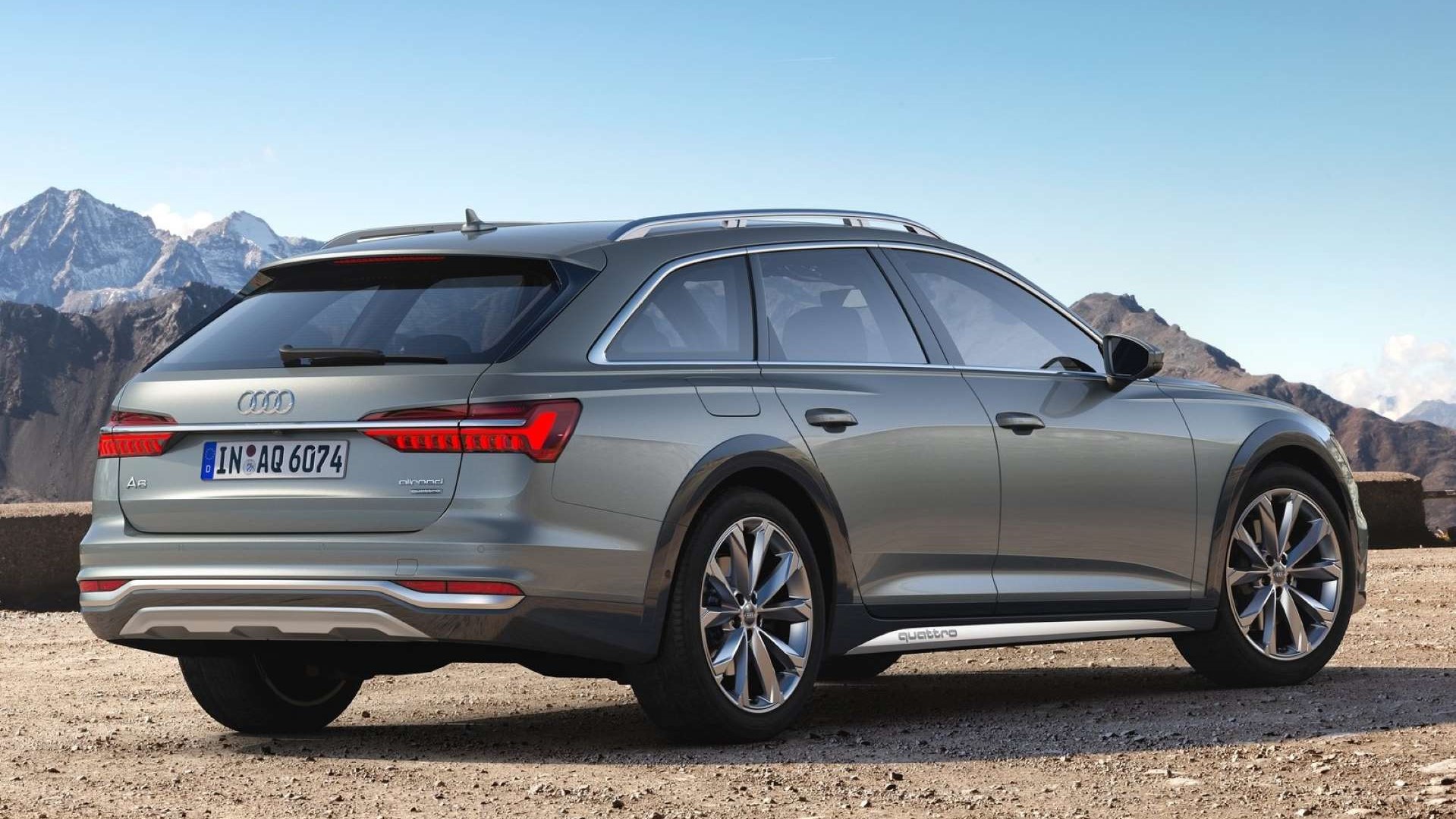
In reviews by automotive outlets, the A4 and A6 both score well for their modern, tech-focused interiors, handsome exteriors, and stellar ride quality, thanks to their respective adaptive suspensions. Car and Driver rank the A6 Allroad above nearly every other wagon on this list as the best you can currently buy. While FCP Euro can't attest to the driving characteristics and daily functionality, both models' qualities demand consideration from any buyer looking for a modern Euro wagon.
Audi RS6 Avant
The Allroads are phenomenal wagons for the everyday family but do leave a bit desired for some. While most want comfort and convenience, others want chest-compressing, neck-snapping performance from a vehicle that can carry the family and the dog. Porsche’s Panamera and Taycan are potential choices, but the newest model on the scene is the return of Audi’s RS6 to American shores.
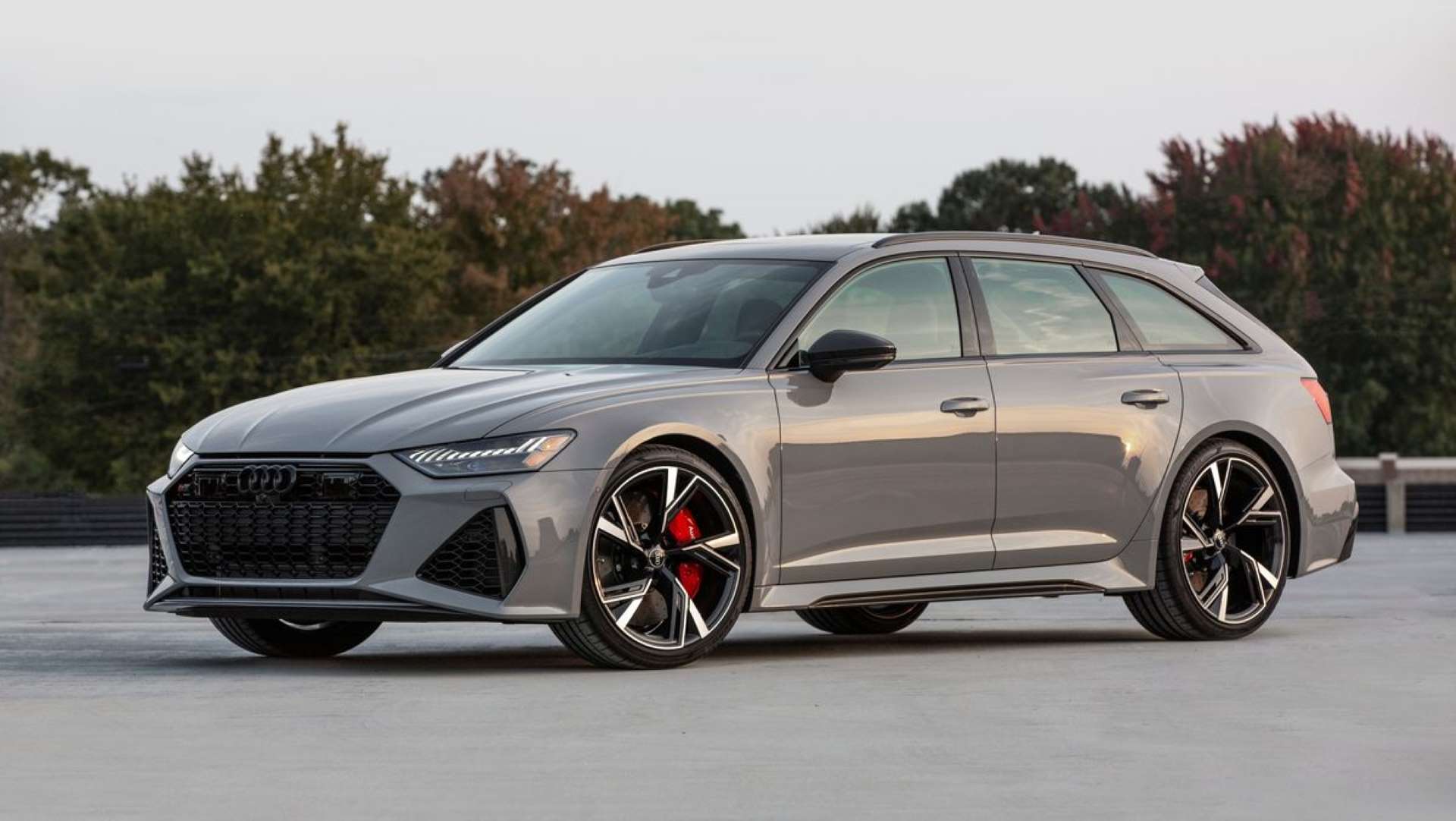
The RS6 is based around the same chassis as the A6 allroad but uses significantly altered drivetrain, suspension, and interior components that set it apart from most others in Audi’s range. Under the hood is a twin-turbocharged 4.0-liter V8 that produces 591 horsepower and 590 lb-ft of torque. Paired with that is an eight-speed Tiptronic transmission, a traditional automatic, unlike the S-Tronic. Of course, the quattro AWD is there too, and with the launch control setting activated, the drivetrain can rocket the 5000lb wagon to 60mph in under 3.5s!
Most straight-line performance is attributed to the drivetrain, but it’s not without help from other areas. The standard 21” wheels are 10.5” wide and are shod in summer performance rubber from the factory to provide the grip necessary for supercar-killing performance. Wider rubber isn’t always apparent to the on-looker, but the RS6 Avant makes it so with its bulging fender and quarter-panel flares. Chuck the family hauler into a corner, and that rubber will be working magic there, too, with the RS-tuned air suspension and the sport differential. Adaptive dampers paired with the RS-specific air suspension tuning give the super-wagon several choices for ride quality like the A6 allroad, from stiff and sharp to comfortable and composed.
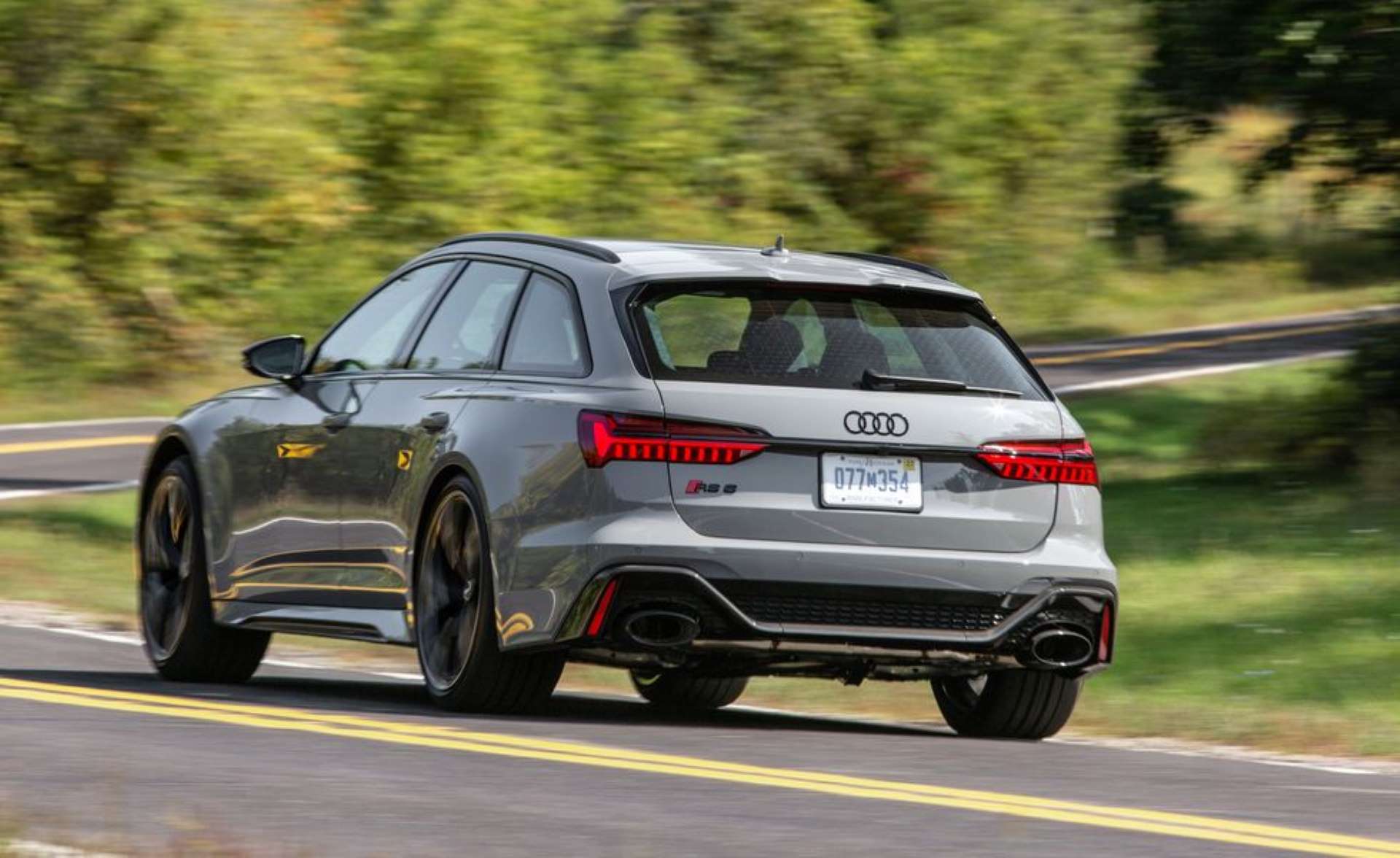
Alternatively, buyers can opt for the Dynamic Ride Control option that replaces the air suspension with a more traditional steel-spring setup. Included with the steel springs are adaptive dampers connected via hydraulic oil lines and a central valve. As the car pitches and rolls, oil flows out of the uncompressed dampers into the others to counteract inertia forces via increased damping resistance. It also aids in comfort as hydraulic pressure between the dampers is equalized by the central valve. The DRC is the sportier choice but sacrifices the adjustable ride height and comfort when doing so.
Rounding out the performance features are the Sports Differential and the massive brakes. The former utilizes electronic control and a clutch pack for each axle so that the car’s computers can actively dictate how much torque drives either of the rear wheels at any given time. Combined with the active rear-wheel steering, the sport differential adds loads of mid-corner stability and adjustability to the driver in any weather condition. The brakes are less technologically advanced but still provide enough stopping force to pull tar off the road thanks to enormous 10-piston front calipers clamping over 420mm steel front rotors. Carbon ceramics from the Lamborghini Urus are an optional extra. Their improved braking performance is such a boost over the steel pieces that they allowed Audi to remove the RS6 Avant’s speed limiter for an unrestricted peak of 190mph.
Beyond the performance, the RS6 Avant offers a slew of technology in a sharp and tech-focused interior. A trio of screens makes up the bulk of the information centers and controls for the infotainment and HVAC systems, with the largest being the 12.3” Audi Virtual Cockpit gauge cluster. The fully programmable screen uses Google Maps integration and features two RS-specific layouts detailing all the readings you’d need for performance driving. If you’d prefer to avoid the touchscreens, the steering wheel controls operate more than a few functions. Still, the haptic feedback on the infotainment and climate control screens gives great feedback and a sense of “pressing” the screen.

Passenger comfort is led by the RS-exclusive seats featuring sporty bolstering, an embossed RS logo, leather upholstery, and heating and cooling functions. The optional Executive Package adds rear seat heating, power soft-close doors, a HUD, and extended leather. It also opens up the possibility of the Cognac upholstery color, unavailable in the standard offering. Buyers looking for the most performance options can have the RS-Design, which adds similar extended leather, red or gray-bordered seat belts, and RS floor mats.
The only negatives from the various offerings are safety tech options. Adaptive cruise control, side assistance with rear traffic assist, intersection assist, and pre-sense rear are available only through the Driver Assistance package. Barring the Audi terminology, those are features you get as standard on $35,000 Japanese sedans and crossovers, but not on a $120,000 Audi. It’ll be an additional $2,250 for the safety features. However, if that’s the only real negative, then the RS6 Avant has to be one of the best wagon options available today and is sure to be a future classic.
Mercedes E450 All-Terrain
The wagon has been a staple in Europe for as long as they’ve existed. Of all the offerings to have ever hit showroom floors, few have had the impact that the long-roof variants from Mercedes have. Nowadays, the wagon has all but disappeared from Mercedes’ lineup save for one model, the E450 All-Terrain. As a lifted, plastic-clad example, the AT is another version of the currently popular “offroad” fad as manufacturers position their wagons to compete with the gaggle of crossover offerings.
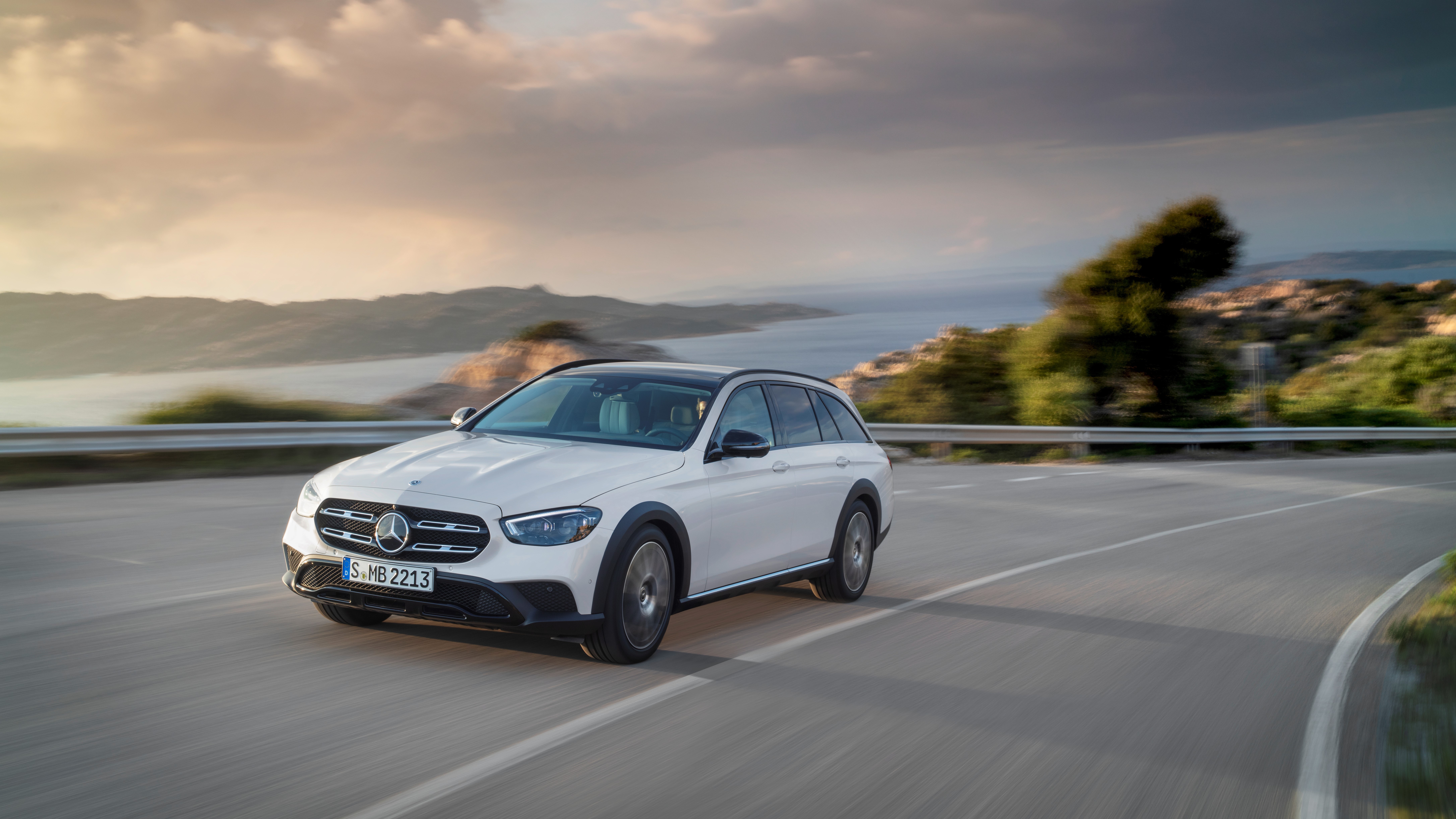
The E450 All-Terrain is a new kind of wagon for Mercedes in theory, but their long history with the variant has left them with little to do to update the previously available E450 estate. Debuting in 2021, the All-Terrain is the first “offroad” style wagon offered by Mercedes. At all four corners sits adaptive and height-adjustable air suspension with automatic load leveling for a standard 1.2” lift over the outgoing non-AT E450 wagon. As lifted wagons go, the Mercedes is hardly the most off-road-focused with relatively little suspension clearance, so don’t get yourself into serious conditions. However, the overall ride comfort is what you’d expect from a German luxury machine and does well on the road with the standard 19” wheels. Various outlets have reported a decrease in quality with the larger, optional wheel choices, though that should always be expected with a shorter tire sidewall.
Powering the lifted E-Class is Mercedes’ first inline-six-cylinder engine in over two decades, the M256. Displacing 3.0-liters and fed by a twin-scroll turbocharger and an electric supercharger, it produces 362 horsepower and 369 lb-ft of torque for a nearly identical output to the A6 allroad. A 9-speed automatic transmission and Mercedes’ 4Matic all-wheel-drive system round out the drivetrain. All of those specs are nearly identical to the A6 allroad, including the 4500lb curb weight, yet the E450 All-Terrain has been clocked reaching 60mph in 4.4s, half a second faster than the Audi.
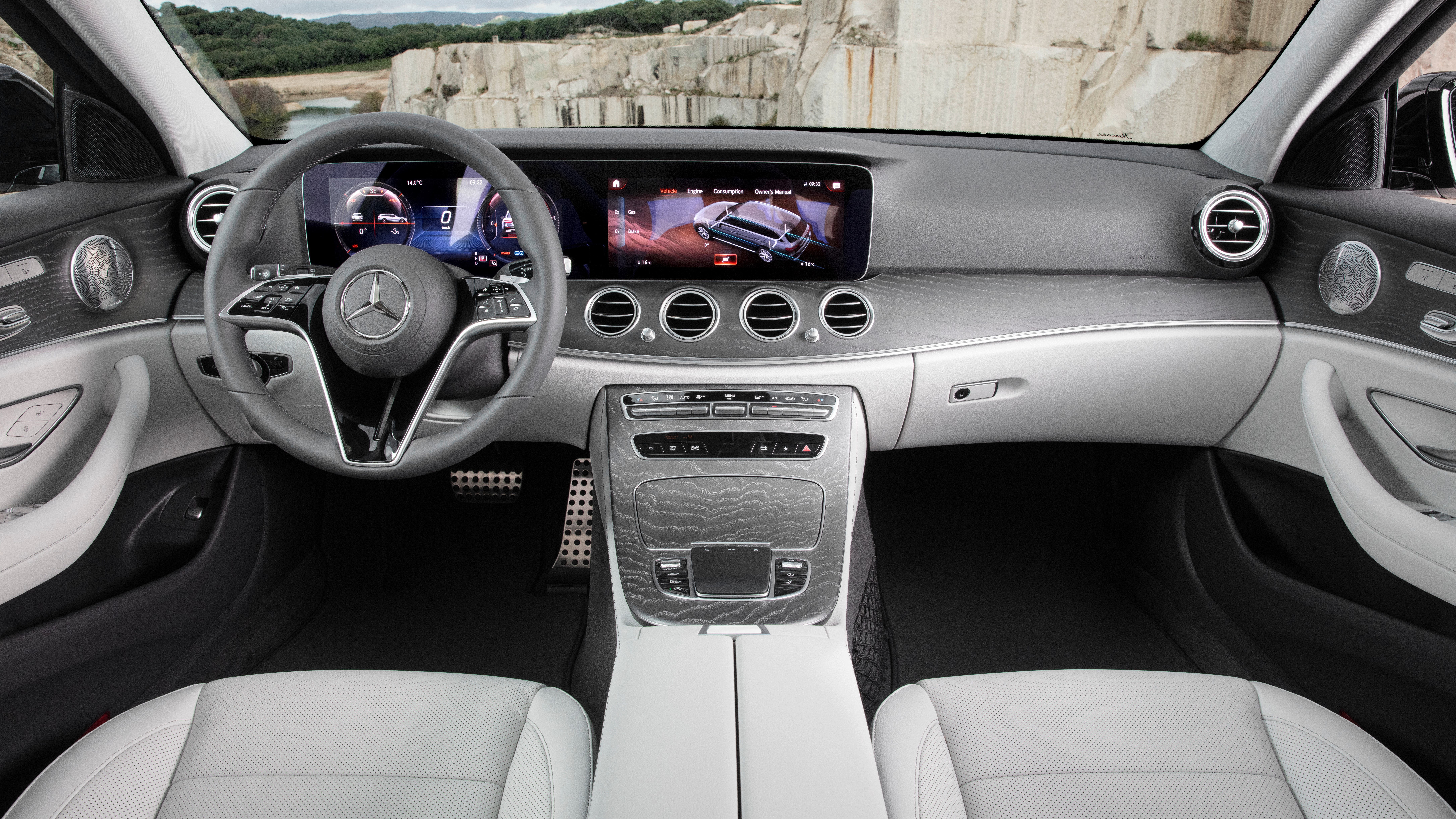
With that said, the E450 All-Terrain is assuredly not a performance-oriented wagon but one best suited to suburban and rural driving—although the plastic cladding on the exterior says otherwise. Moving beyond the body into the cabin introduces a world of luxury. Current Mercedes interior styling is some of the best in the business, as the dashboard’s flowing surfaces wrap around the cabin without a line out of place. Add in the wood trim, ambient lighting, and large displays; the E450 feels modern without the fussy angles of other competitors. Standard upholstery is MB-Tex leatherette in four colors, while leather and Nappa leather are available in four and three colors, respectively. Six trim options bolster the interior customization, and all but one are free of charge. Heated front seats are standard, but a heated wheel, ventilated seats, and heated rear seats are all optional.
Other optional extras are pretty limited, but more are available than the Audi, even with more standard features. The Acoustic Comfort Package made it into my personal build-spec, with laminated glass featuring UV protection, thicker rear carpeting, and improved sound deadening in all areas for a quieter driving experience. The MBUX Augmented Video for Navigation is another cool feature for just $350. It uses the frontal camera to show you a live feed of the road ahead with digital information like guiding arrows, street names, and house numbers. However, like the Audi, the bulk of advanced safety is once again an optional extra. A staggering 15-item long list with features like lane change assist, blind spot monitoring, and active emergency stop assist will cost every new buyer an extra $1950.

Starting at a hair over $68,000, it’s effortless to slap on an additional ⅓ of the starting price in options to have the features you feel a luxury car should. Leaving equipment like advanced safety tech and even a heated steering wheel to optional extras seems like a bit of a cash grab—and not just from Mercedes—but you do end up with a niche model in your perfect spec. For under six figures, it will likely be tough to beat the E450 All-Terrain’s luxury and design, but if anyone is up to the challenge, it’s the final offerings on this shortlist.
Volvo V60/V90 Cross Country
Like Mercedes, Volvo has been delivering wagons for over sixty years to families worldwide. Their dedication to safety and practicality, mixed with their reserved and modern design language, has made them the go-to choice for many. At this point, the Volvo wagon is in danger as the company pushes hard towards electrification with a series of crossover-looking things. The final days of the Swedish wagon may be upon us, but the current generation of wagons is something that needs to be celebrated.
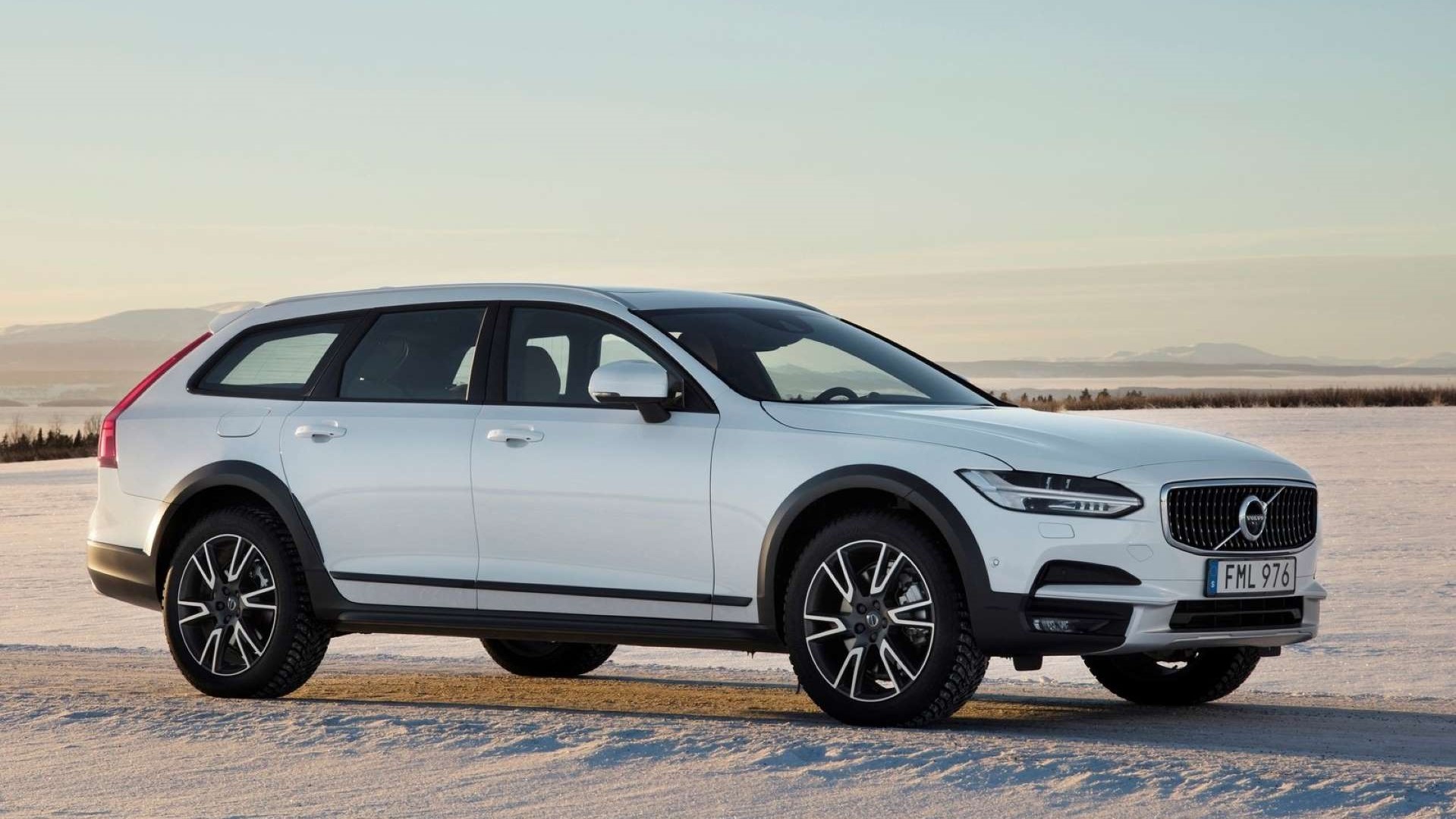
For nearly the last two decades, the wagon of choice for so many was the XC70 Cross Country, a lifted, plastic-clad, rugged-looking wagon design to take on the harshest Nordic winters without a fuss. The model eventually ended, but Volvo’s lineup has since split, with the V60 and V90 sharing wagon duties. As you might expect, the V90 is Volvo’s flagship wagon, based around the S90 sedan. It’s the biggest of the current bunch and competes with the E450 and A6. Supporting the V90 is the V60, a smaller wagon that takes the fight to Audi’s A4 allroad.
As Cross Country models, the V60 and V90 are trimmed like the Cross Turismo, allroad, and All-Terrian. Their sharp and unmistakable design is made rugged by the plastic fender, bumper, and rocker treatment that gives them the quintessential “offroad” look. Lifting both wagons for their 8.3” of ground clearance are standard steel springs and passive dampers, but Four-C adaptive air suspension is an option. Beyond that, both Cross County models are best suited to the occasional dirt road rather than regular trips through the rough stuff.
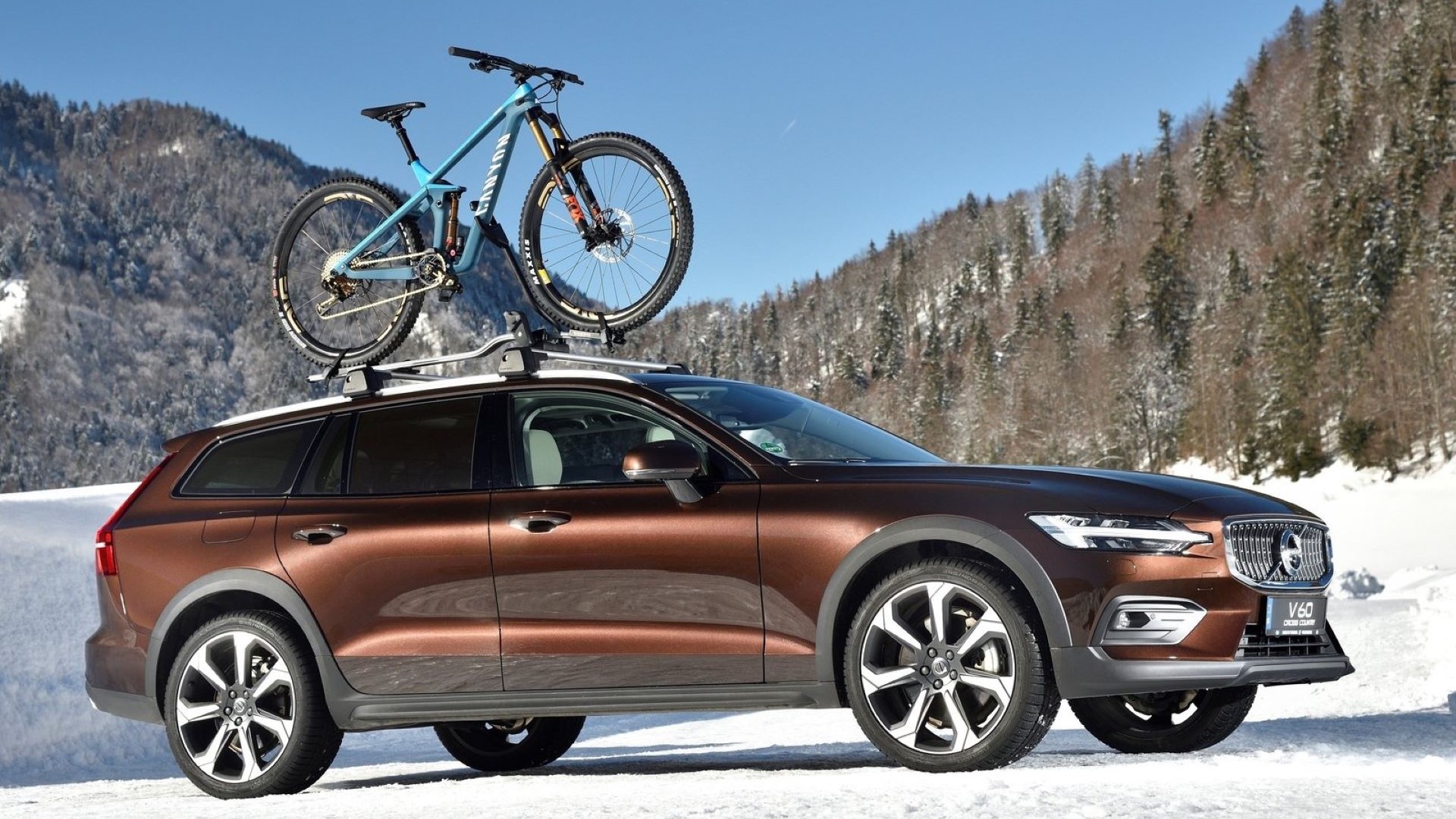
The Drive-E engine and a 48-volt mild hybrid system provide the oomph in the Cross Country variants. The Drive-E is a turbocharged and supercharged 2.0-liter four-cylinder mounted transversely in the engine bay. In the V60, the Drive-E is capable of 250 horsepower and 258 lb-ft of torque, but the larger V90 bumps those numbers to 295 horsepower and 310 lb-ft of torque. Mated to the engine in both models is an 8-speed automatic transmission that delivers torque to all four wheels as standard. With 0-60 times in the high 6-second range, neither are the spriteliest long-roofs you can buy today, but that’s not why Volvo offers them.
Going after a V60 or V90 means ditching straight-line performance and some cornering composure for a luxurious and well-appointed ride that’s sure to look as beautiful as anything it’s parked next to. Every exterior panel is sculpted and shaped with a purposeful yet elegant demeanor supported by the “Thor’s Hammer” headlights and prominent grille. However, the best the car offers comes from the offerings inside the cabin. A minimalist but highly-functional design features two-tone leather, polished trim, and open-pore wood to deliver a uniquely Swedish feel. At the center of the dashboard is a 9.0” touchscreen that acts as the central command for all multimedia and climate controls, though a few features are controlled by the rotary knob and buttons positioned below it. Google software is the primary operating system, but Apple CarPlay is a feature as well. Media outlets that have reviewed the Cross Country siblings point out that the infotainment response is the low point of the interior, thanks to relatively slow response times and a slightly clunky user interface.
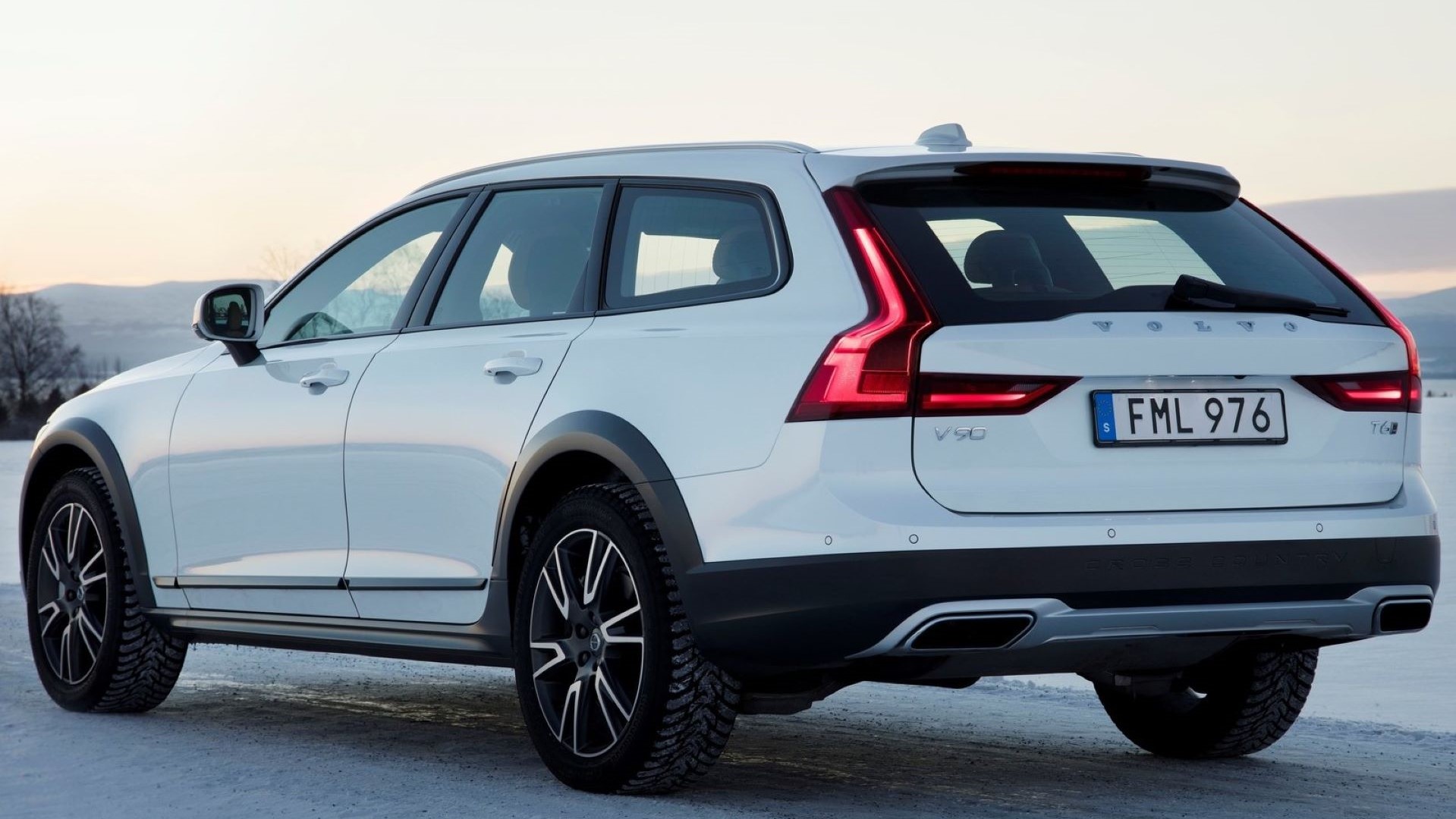
That may be a sticking point for some, but there are plenty of other standard features on the base “Plus” trim to distract you from that. In the winter, your standard leather seats (Nappa leather in the V90) have adjustable seat heating to keep you at your perfect warmth, along with the two-zone climate control. On sunny days and rainy ones, you’ll be able to bathe in natural light thanks to the panoramic sunroof as you drive down the road with more standard safety features than any other model. Both models benefit from adaptive cruise control, Pilot Assist, a combination of lane-keep assistance and auto-braking, BLIS, and cross-traffic alerts. Jumping into the upper “Ultimate” trim comes with exclusive interior trim, a crystal gear selector crafted by Orrefors, ventilated Nappa leather seating surfaces, and a massaging feature, though only on the V90. Rear seat passengers will benefit from the four-zone climate control system, though the heated rear seats remain part of an option package, as does the Bowers & Wilkins 1400-watt stereo system.
The smaller wagon starts at a hair over $50,000 in Plus trim and a skosh over $55,000 in Ultimate guise. The V90 is priced similarly, costing about $10,000 more than the V60 in its respective trims. That puts them right on par with their rivals, if not a bit on the less expensive side, before options have been added. Is that enough to make you forgo the German offerings for the one less purchased?
Volvo V60 Recharge
This V60 is the last vestige of the relatively affordable normal wagon. So many manufacturers have gone after the slightly-lifted, crossover-fighting market that the long-roofed sedan with standard suspension is more of a unicorn than some exclusive supercars. Luckily, the V60 Recharge isn’t the eco-focused plug-in hybrid you’d assume it is, but rather one flowing with systems designed and engineered by Polestar, Volvo’s performance division turned EV maker.
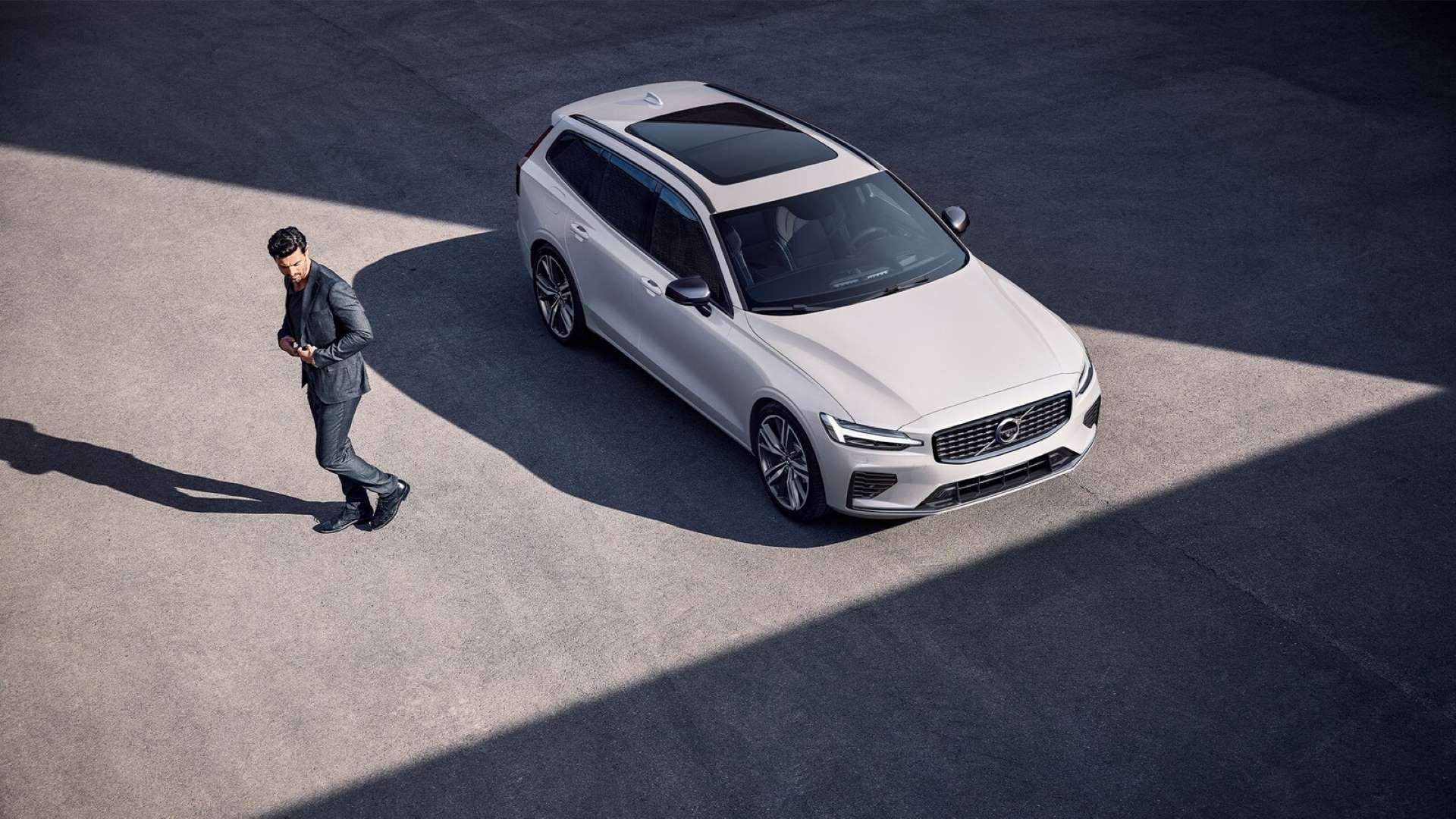
The V60 Recharge is available in one trim, the T8 eAWD. Like the Cross Country wagons, the Recharge features Volvo’s supercharged and turbocharged Drive-E 2.0-liter four-cylinder engine, but unique to this model is the inclusion of a battery pack and electric motor. The gasoline and electric drivetrain produce a combined 455 horsepower and 523 lb-ft of torque for a sub 4.5s 0-60 time. That puts it on par with Audi’s S6 while returning significantly better fuel economy.
Underpinning the fast wagon is Polestar-engineered Ohlins suspension at all four corners. Utilizing Dual-Flow Valve tech and manually adjustable damping, owners can fine-tune their suspension as they see fit. They won’t be nearly as comfortable as the Cross Country’s air suspension, but you’ll be rewarded in the corners as they keep the 4500lb Recharge relatively flat and composed, even at higher speeds. Once it’s time to slow down, a pair of six-piston Brembo calipers are ready to clamp down over 370mm floating steel rotors. While performance-oriented, the weight savings the multi-piece rotors offer also help improve the hybrid’s fuel economy rating. Also aiding braking are the lightweight, forged 19” wheels, exclusive to the Recharge, although the sticky summer tires they’re fitted with will only improve driving performance.
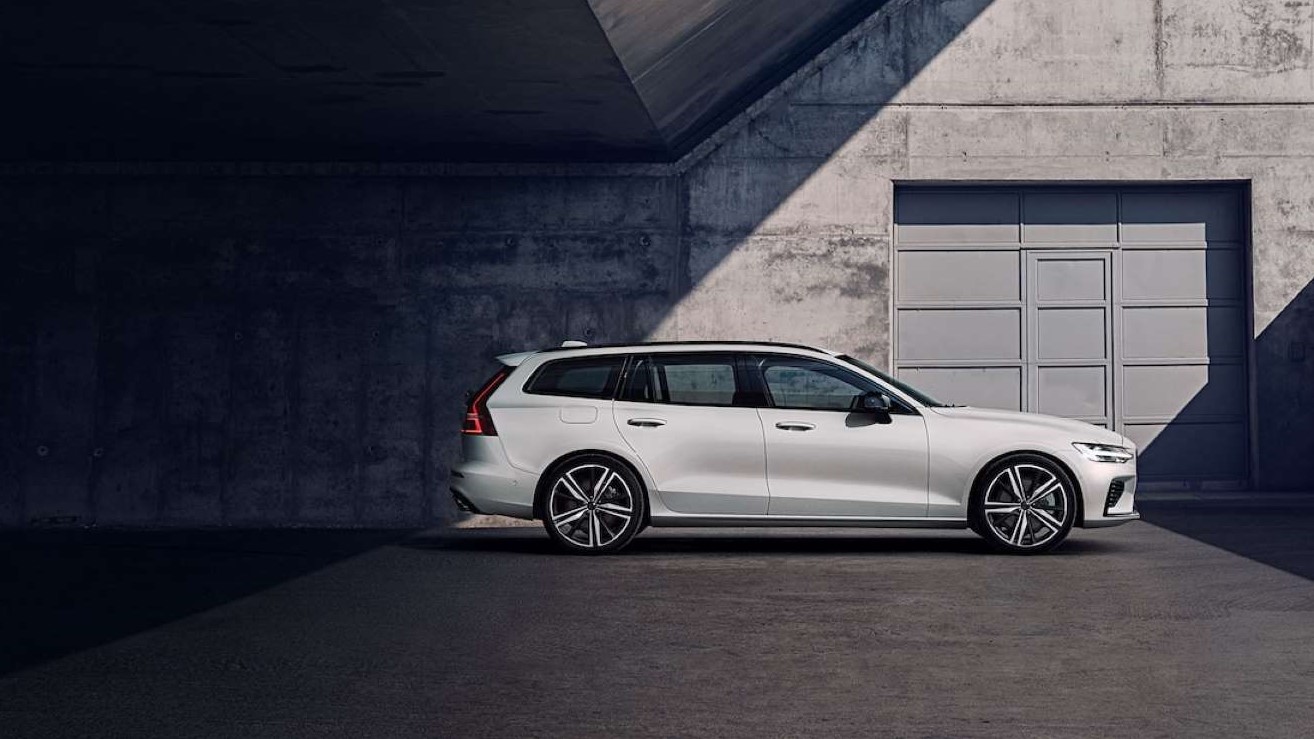
The Recharge isn’t all about driving performance, though; it’s a complete car that features comfort, too. If that wasn’t clear from looking at it, then the complete lack of options should fix that. Where the Cross Country’s have optional extras for additional creature comforts and audio, the Recharge carries them as standard. The shortlist of those offerings includes a 1400-watt Bowers & Wilkins audio system, heated rear seats, and a HUD. On top of that, the T8 comes with a heap of other unique interior and exterior features like Nappa Leather and Open Grid Textile seats, a leather-wrapped sport steering wheel, and Metal Mesh Aluminium trim. Even the seatbelts are colored to match the brake calipers.
Externally, the V60 Recharge wears bumpers, skirts, and fenders now exclusive to the model, along with Polestar badges and a new grille. It’s a naturally aggressive-looking wagon, too, and the black window trim, roof rails, and mirror caps only further enhance its road presence. Most disappointingly, the Recharge is available in four colors— black, grey, silver, and white. Although they each look good, we can’t help but imagine one shod in Sonic Blue or Flash Green.
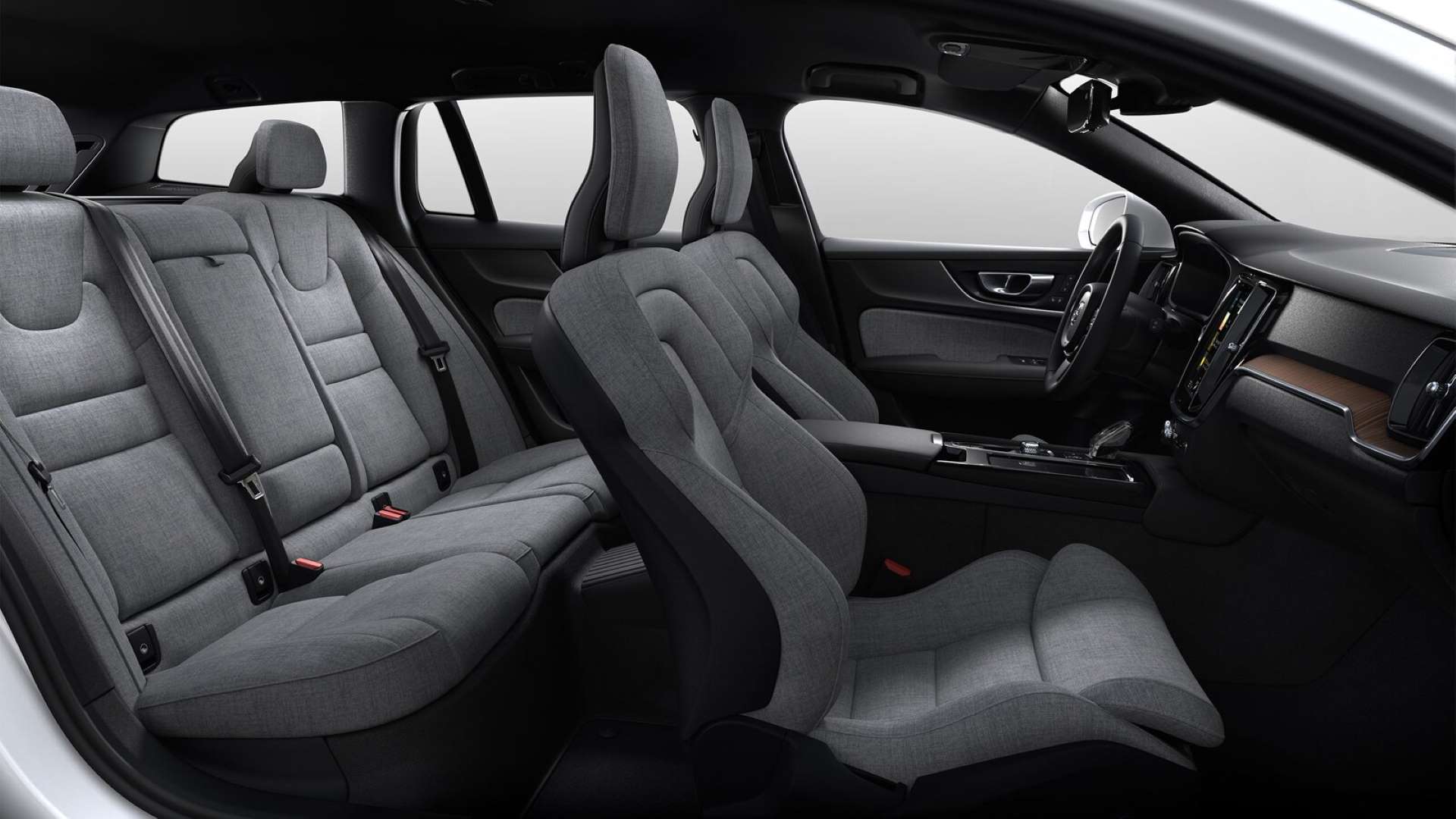
All in, a V60 Recharge T8 eAWD will cost any US buyer over $70,000. That’s substantial money for a Volvo, but it does make sense when you dig into what the V60 offers. Not too many other places can you get a plug-in hybrid wagon capable of 74MPGe and BMW M2-matching acceleration. It’s likely the last of the fast Volvo wagons and certainly the only fast Euro Wagon for under $100,000. Get them while you can.
Whether you can or can't afford one of these Euro wagons, appreciate them while they're available. Engines are shrinking, manufacturers are sharing platforms to save costs, and body styles seem to be dropping weekly. There's no doubt that the wagon is on its way out in America, so grab one while you can. If not, then plenty of older models are floating around in various states of condition, just needing a caring new owner. Ditch that crossover; go get a wagon.

